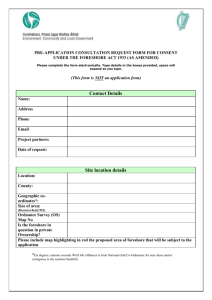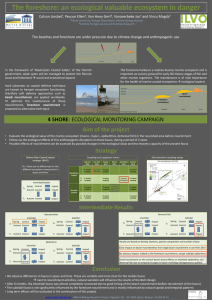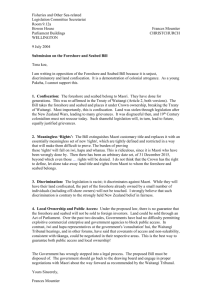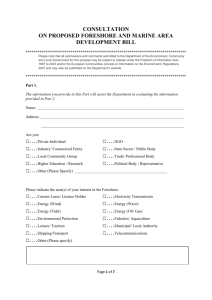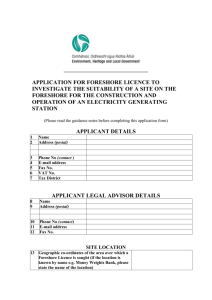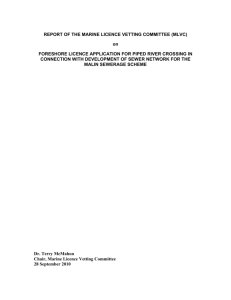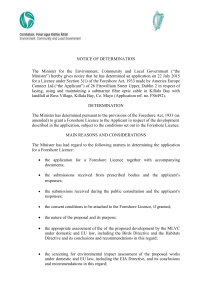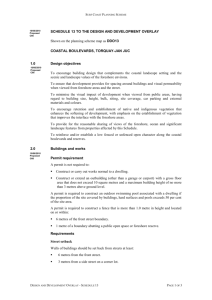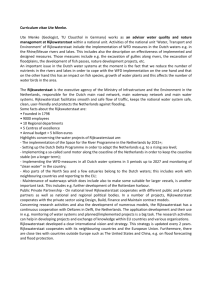Vera_Coelho_Bonn_2013_hybrid_engineering
advertisement
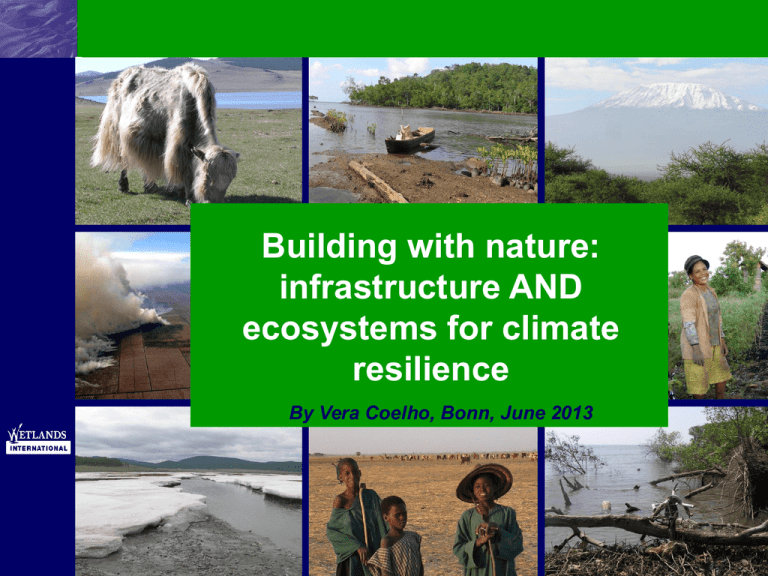
Building with nature: infrastructure AND ecosystems for climate & resilience By Vera Coelho, Bonn, June 2013 Infrastructure for climate change adaptation? • Infrastructure projects rely on finite and often scarce resources; • Some infrastructure provides ‘static’ protection only; • Project efficiency is often judged based on tangible costs and benefits, leaving out the “invisible” ones. Building with Nature Advantages: • Multiple benefits: CCA + carbon storage, fisheries, recreation etc; • Often low construction costs; • Adaptive (within boundaries); • Enables multi-purpose land use. Example 1. Room for the River Removing hard infrastructure in heavily modified systems: €2,4 billion investment in the Netherlands Example 2. protective foreshores Saltmarshes, flood forests and oyster reefs in front of dykes reduce construction & maintenance costs Clay dike lower than trad. design 100m wide Wave reducing willow-tree plantations Credits: Building with Nature What about costs? What about costs? What about costs? Study commissioned by Dutch water infrastructure authority (Rijkswaterstaat): Green alternatives to conventional infrastructure measures were substantially cheaper, despite slightly higher maintenance costs. Green alternative Construction + maintenance (€/m) Dyke with swampy foreshore (reeds) 2000-3500 cheaper Dyke with flood forest protection 2500 cheaper Seawall with saltmarsh foreshore 16-875 cheaper Source: Rijkswaterstaat 2011 Conclusions • Not a choice between infrastructure or nature • Many applications are possible. This requires further testing in different environments • Shift in thinking required • Need for major pilot initiatives • More research required: costs; adress uncertainties risks, institutional matters etc… More Information? www.wetlands.org Vera.Coelho@wetlands.org Building with Nature From fighting nature towards building with nature? hard solutions Temperate soft solutions IJsselmeer foreshore nourishment Oyster reefs BwN design Singapore Labrador Park Coastal protection Mangroves “Underwater garden” Tropical Pilot Sand Engine Delfland Coast Coastal protection Sea grass focus on ecosystem functioning Singapore ‘rich levee’ focus on infrastructure development Credits: Building with Nature Example 3. Mangrove mud-coasts Eroding coasts: combining sediment nourishment, small-scale infrastructure and mangrove rehabilitation Example 4. The sand motor The sand motor: using natural currents for reinforcing coastlines July 11, 2011 September 5, 2011 October 13, 2011 January 10, 2012 March 20, 2012 May 14, 2012 July 7, 2012 September 4, 2012 Credits: Building with Nature

